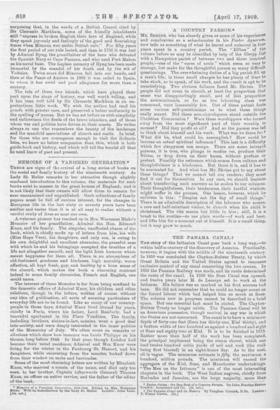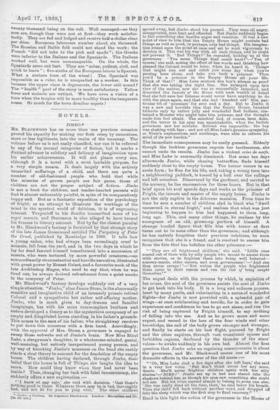THE PANAMA OANAT.,1
THE story of the Isthmian Canal goes back a long way,—to within half.a.century of the discovery of America. Practically, however, it begins with the middle of the nineteenth century. In 1850 was concluded the Clayton-Bulwer Treaty, by which Great Britain and the United States agreed to renounee exclusive control of any canal connecting the two oceans, In 1855 the Panama Railway was made, and its route determined the route of the canal. In 1809 the Suez Canal was opened, and twelve years later M. de Lesseps set to work at the Isthmus. His failure was as marked as his first success had been. He did not remember that he could no longer count on the forced labour which had helped him so rnuoli at Suez. The scheme now in progress cannot be described in a brief space. But one essential fact must be stated. The Clayton- 13ulwer Treaty no longer exists. The Panama Canal will be an American possession, though neutral in any war in which the States are not concerned. The canal is to have a minimum depth of forty-one feet (Suez has thirty-one, Kiel thirty), and a bottom width of two hundred as against a hundred and eight at Suez and eighty-two at Kiel. It is to be finished in 1915. Rather more than half of the work has been completed, the principal implement being the steam shovel, which can load twelve hundred cubic yards of soil and rock (the rook being first blasted) in an eight-hours day. As to the cost, all is vague. The minimum estimate is fifty, the maximum a hundred, million pounds. The minimum will exceed the aggregate of the Kiel, Suez, and Manchester undertakings- "The Men on the Isthmus" is one of the most interesting chapters in the book. The West Indian negroes, chiefly from Barbados and Jamaica, are the large majority, more than Pastor °Mum: the Day.Book of a Country Perm. By Jobs Runtley London: Longmans and Co. L5s. netd t The Panama C7anal and its Makers. By Vanglian Cornish, D.Sc. London; T. Fisher Unwiu. Dud
twenty thousand being on the roll. Well managed—as they now are, though they were not at first—they work satisfac- torily. They are fed and lodged and receive haLf-a-dollar clear Per diem. European labourers number about six thousand. The Russian and Baltic folk could not stand the work; the French "did not take to the pick and spade"; the Greeks were inferior to the Italians and the Spaniards. The Italians worked well, but were unmanageable. On the whole, the Spaniards come out best. They are "sober, patient, civil, and quick to learn " ; five-sixths of the European labour is Spanish. What a curious turn of the wheel! The Spaniard was impossible as a ruler, he is unequalled as a worker. Is this because the upper "class is degenerate, the lower still sound? The " health " part of the story is most satisfactory. Yellow fever and malaria are extinct. We have even a vision of a time when the tropics will be more healthy than the temperate zones. So much for the terra domibus negata I







































 Previous page
Previous page